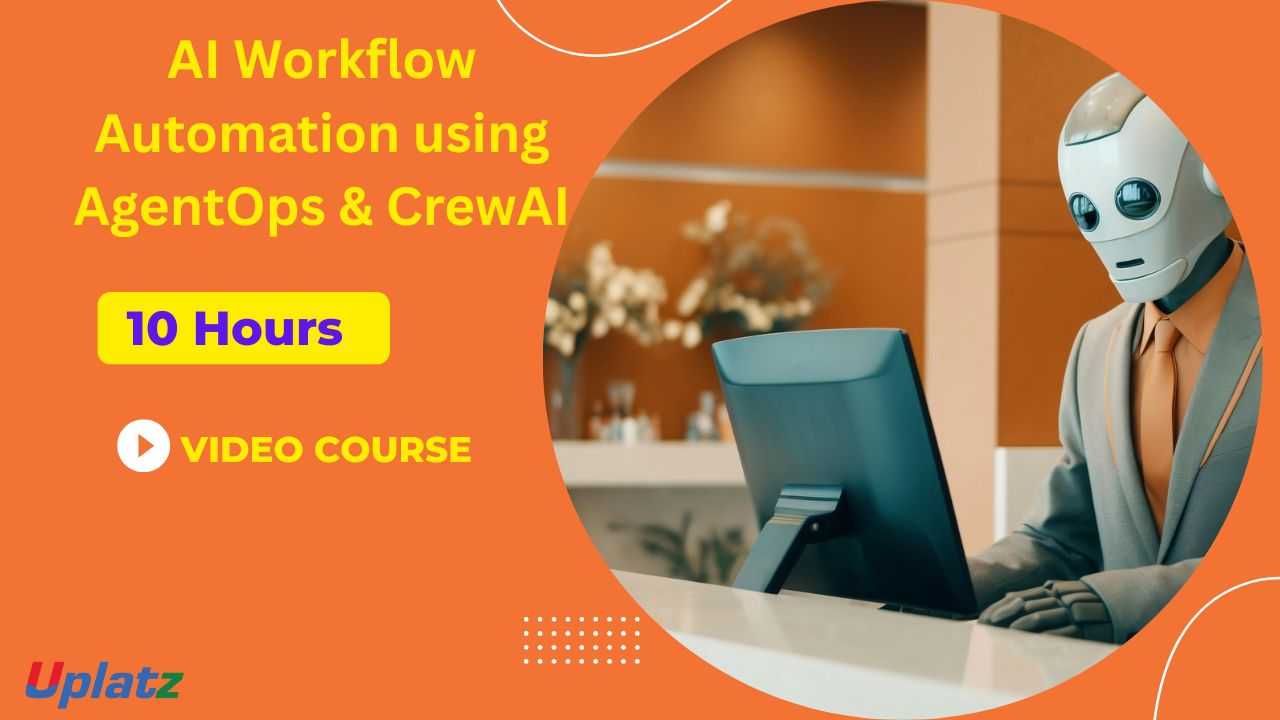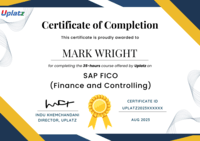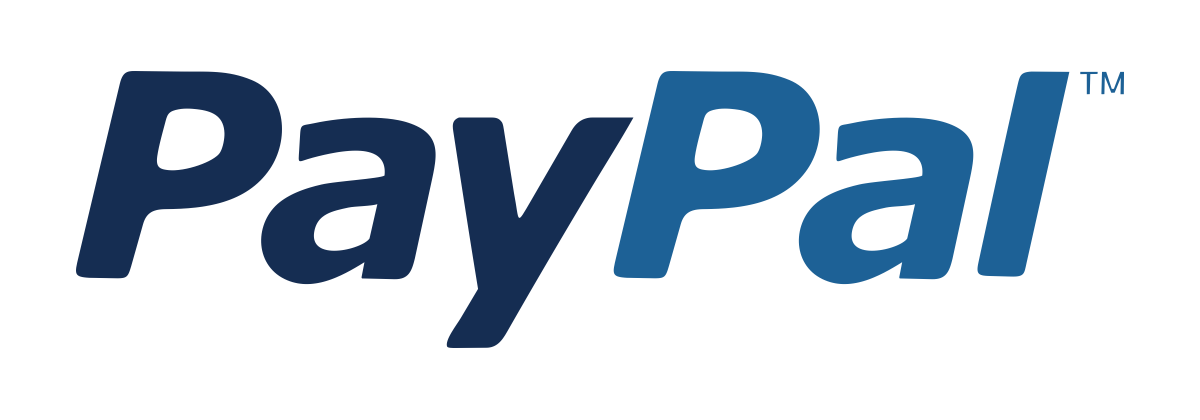CrewAI: Coordinated AI Agent Workflows
Build autonomous, role-based, multi-agent AI systems with CrewAI—coordinate expert agents to perform complex tasks collaboratively and intelligently.Preview CrewAI: Coordinated AI Agent Workflows course
Price Match Guarantee Full Lifetime Access Access on any Device Technical Support Secure Checkout Course Completion Certificate 93% Started a new career
BUY THIS COURSE (
93% Started a new career
BUY THIS COURSE (GBP 12 GBP 29 )-
 81% Got a pay increase and promotion
81% Got a pay increase and promotion
Students also bought -
-

- AI Workflow Automation using AgentOps & CrewAI
- 10 Hours
- GBP 12
- 10 Learners
-

- AI for Finance: Forecasting, Risk Scoring, and Portfolio Optimization
- 10 Hours
- GBP 12
- 10 Learners
-

- AI for Legal Drafting & Contracts
- 10 Hours
- GBP 12
- 10 Learners

CrewAI: Coordinated AI Agent Workflows is an advanced, self-paced course that teaches you how to design, orchestrate, and manage autonomous AI teams capable of collaborating to complete multi-step, goal-driven tasks. Designed for AI engineers, developers, data scientists, and automation specialists, this program introduces you to CrewAI — an open-source multi-agent coordination framework that lets you build “AI crews” working together just like real-world teams.
From designing role-based agents (such as researcher, coder, reviewer, or strategist) to deploying full collaborative missions powered by LLMs (GPT-4, Claude, Gemini, or open-source models), this course blends conceptual clarity with hands-on implementation. You’ll gain practical experience orchestrating multi-agent systems that reason, communicate, and act autonomously — all while maintaining structured roles, memory, and mission control.
🔍 What is CrewAI?
CrewAI is an open-source multi-agent orchestration framework that enables developers to coordinate multiple AI agents, each with distinct roles, goals, and tools. Instead of a single, all-purpose chatbot, CrewAI empowers you to design a crew of specialised agents that collaborate — mirroring human teamwork.
Each agent in CrewAI can have:
-
A role (e.g., Researcher, Planner, Developer, or Reviewer).
-
A goal aligned with the crew’s mission.
-
Access to tools such as APIs, documents, or databases.
-
Memory to recall context and past actions.
-
A communication layer for coordinated reasoning and task execution.
CrewAI abstracts away low-level orchestration logic so you can focus on designing collaborative intelligence — agents that share insights, delegate subtasks, and validate each other’s work toward a unified objective.
⚙️ How Does CrewAI Work?
At its core, CrewAI provides the infrastructure to create and manage autonomous, inter-communicating agents using Python. The framework integrates seamlessly with Large Language Models (LLMs) and supports external tools, APIs, and vector databases for knowledge retrieval.
The workflow typically involves:
-
Defining Roles – Assign domain-specific responsibilities such as “research trends,” “generate code,” or “review output.”
-
Establishing Crew Logic – Specify how agents interact, share context, and evaluate outcomes.
-
Setting Mission Goals – Define multi-step objectives with checkpoints and success criteria.
-
Launching the Crew – Agents execute tasks concurrently or sequentially, exchanging information through structured communication protocols.
-
Evaluating and Iterating – Monitor reasoning chains, fix coordination issues, and refine crew performance using feedback loops.
CrewAI’s flexible design lets you build end-to-end autonomous workflows — from research pipelines and report generation to product design, customer-support triage, and code review automation.
🏭 How CrewAI Is Used in the Industry
The adoption of multi-agent systems is growing rapidly across sectors where automation, contextual intelligence, and coordination are key.
Industry use cases include:
-
AI Research and Data Analysis: Teams of research agents collect, summarise, and validate academic or business data.
-
Software Development Automation: Agents collaborate on coding, testing, and documentation tasks.
-
Business Workflows: Agents act as analysts, content creators, and reviewers in marketing or operations pipelines.
-
Customer Service Automation: Coordinated agents handle queries, classify intents, and compose personalised responses.
-
Productivity Assistants: Agent crews manage scheduling, email responses, and data entry tasks in enterprise environments.
Companies experimenting with multi-agent orchestration frameworks similar to CrewAI — including OpenAI (Team GPT), LangChain Agents, and AutoGPT projects — demonstrate that collaborative AI systems are the future of scalable, goal-oriented automation.
🌟 Benefits of Learning CrewAI
Mastering CrewAI equips you with the skills to design AI systems that work together intelligently, opening doors to cutting-edge roles in AI automation, LLM integration, and multi-agent system engineering.
Key benefits include:
-
Practical Multi-Agent Design: Learn how to structure agents for research, planning, execution, and review.
-
Autonomous Workflow Automation: Replace manual processes with coordinated AI crews that self-manage tasks.
-
Enhanced System Scalability: Use CrewAI’s modular architecture to expand capabilities across projects.
-
Integration with LLMs and Tools: Connect agents to GPT-4, Claude, Gemini, LangChain, or custom APIs.
-
High-Value Career Skills: Multi-agent orchestration is a fast-growing domain within AI engineering and automation.
By the end of this course, you won’t just understand how agents work — you’ll be able to build intelligent teams that reason, collaborate, and deliver results autonomously.
📘 About This Course
This course takes a project-driven approach to learning CrewAI. You’ll move from core concepts to production-ready systems through hands-on projects and step-by-step implementation.
You’ll Learn How To:
-
Understand the core principles of multi-agent systems and orchestration.
-
Install and set up CrewAI with Python and integrate external LLMs.
-
Define agent roles, memory, and communication channels.
-
Design goal-oriented missions using CrewAI’s task loop and planner modules.
-
Build structured evaluation systems to debug agent interactions.
-
Integrate CrewAI with LangChain, vector databases, and API tools.
-
Deploy multi-agent systems for research, content generation, or workflow automation.
Each module includes video demonstrations, guided code walkthroughs, and mini-projects that mirror real-world scenarios.
🧩 Real-World Projects You’ll Build
You’ll gain hands-on experience by building and deploying complete multi-agent systems, including:
-
Research and Report Generation Crew: Agents collect data, analyse sources, and compose summaries.
-
Content Production Pipeline: Writer, Editor, and Reviewer agents collaborate on long-form content.
-
Software Development Team: Planner, Coder, and Tester agents build applications autonomously.
-
Business Process Automation: Agents coordinate market analysis and customer insight tasks.
-
RAG and Memory-Enhanced Chat Systems: Integrate CrewAI with retrieval tools for context-aware dialogues.
By completing these projects, you’ll graduate with a portfolio of AI automation solutions that demonstrate expertise in multi-agent collaboration.
👩💻 Who Should Take This Course
This course is ideal for learners who want to move beyond single LLM applications into collaborative, multi-agent AI systems:
-
AI Engineers and Developers looking to orchestrate coordinated agents for enterprise workflows.
-
Data Scientists and Researchers exploring AI-driven analysis and automation.
-
Automation and Integration Specialists building context-aware toolchains.
-
Tech Entrepreneurs designing AI products with autonomous teams and goal management.
-
Students and Innovators experimenting with multi-agent frameworks and AI collaboration.
No prior experience in multi-agent design is required — the course covers everything from agent architecture to deployment.
🧭 Course Format and Learning Experience
The course is fully self-paced, allowing you to progress at your own speed. Each module contains:
-
HD video lectures and live demos.
-
Downloadable code templates and configuration files.
-
Hands-on assignments for practical learning.
-
Checkpoints and quizzes to measure progress.
-
Case studies on multi-agent adoption in industry.
You’ll also receive lifetime access to course materials and future CrewAI updates, ensuring your skills stay relevant as multi-agent technology evolves.
🌐 Why Choose This Course
-
Comprehensive Coverage: From agent architecture to deployment and evaluation.
-
Practical and Project-Oriented: Learn by building real systems.
-
Industry Relevance: Prepares you for roles in AI engineering, DevOps, and automation.
-
Future-Focused Skillset: Multi-agent systems represent the next wave of AI innovation.
-
Community Driven: Based on the rapidly growing CrewAI open-source ecosystem.
By completing this course, you’ll gain the knowledge to design and orchestrate AI crews capable of tackling complex real-world tasks collaboratively and efficiently.
🚀 Final Takeaway
As AI advances from single assistant models to autonomous, collaborative teams, understanding multi-agent orchestration has become essential. CrewAI empowers you to create AI systems that think, plan, and cooperate like humans — bridging the gap between automation and intelligence.
By the end of this course, you’ll be ready to build, deploy, and scale coordinated AI agent workflows for research, development, and enterprise applications — shaping the future of autonomous AI collaboration.
Course/Topic 1 - Coming Soon
-
The videos for this course are being recorded freshly and should be available in a few days. Please contact info@uplatz.com to know the exact date of the release of this course.
-
Understand the architecture and design principles of CrewAI.
-
Create autonomous agents with roles, tools, and LLM models.
-
Assemble agents into structured crews for collaborative missions.
-
Define mission objectives and manage task assignment logic.
-
Use tools, APIs, and external services inside agent workflows.
-
Integrate memory and context persistence in long tasks.
-
Deploy CrewAI apps with OpenAI, Claude, or open-source models.
-
Monitor and debug multi-agent conversations and decisions.
-
Build projects simulating real-world teams using AI agents.
-
Apply best practices in agent design, safety, and evaluation.
- Why coordinated agents?
- Overview of CrewAI features and architecture
- Use cases: Research, code generation, automation, content creation
- Installing CrewAI and dependencies
- Setting up OpenAI / Anthropic / Hugging Face API keys
- Exploring the CrewAI code structure
- Defining roles and goals
- Choosing LLMs per agent
- Tool integration and behavioral prompts
- Creating and assigning agents to crews
- Understanding mission structure
- Agent interaction logic and communication style
- Defining mission steps
- Automatic vs manual step control
- Assigning responsibilities to agents
- Tool loading and plugin use
- Calling APIs, running Python code, scraping web data
- Using agents for web search, file reading, and custom logic
- Agent memory options
- Sharing context across mission steps
- Persistent memory across runs
- Interactive vs autonomous mode
- Delegation, feedback, and looped reasoning
- Evaluation of task outcomes
- Project 1: Research Crew (Researcher + Summarizer + Editor)
- Project 2: DevOps Crew (Coder + Reviewer + Tester)
- Project 3: Business Analysis Crew (Analyst + Reporter + Visualizer)
- Running crews in background or cron jobs
- Logging and debugging interactions
- CI/CD for crew-based LLM apps
Upon completion of the CrewAI: Coordinated AI Agent Workflows course, learners receive a Certificate of Completion from Uplatz, validating their ability to design, deploy, and manage multi-agent systems using CrewAI. The certification highlights your proficiency in orchestrating intelligent agent roles, planning missions, integrating tools, and simulating real-world team dynamics using AI. Ideal for AI engineers, automation developers, solution architects, and product innovators, this credential serves as proof of your competence in multi-agent AI design and collaboration strategies.
- AI Agent Engineer
- Automation Workflow Designer
- AI Orchestration Specialist
- Multi-Agent Systems Developer
- Prompt & Agent Architect
- AI Product Designer
CrewAI lets you design collaborative, role-based agents that perform missions together. It focuses on realistic teamwork models where agents have specialized responsibilities.
A crew is a group of agents, each assigned a role and tools, working together toward a shared mission or multi-step task.
Agents communicate via messages coordinated by the mission controller. Each message is logged, structured, and used to inform subsequent agent actions.
Yes, tools can be integrated using CrewAI’s tool system, allowing agents to execute Python functions, call APIs, access search engines, or scrape data.
Each agent is assigned a persona, including name, description, goal, and toolset. The role defines what tasks the agent is expected to handle.
CrewAI works with OpenAI (GPT-3.5/4), Anthropic (Claude), Hugging Face models, and can be extended to use local models.
Yes, agents can be fully autonomous or optionally supervised. Crews can execute missions without human intervention based on predefined logic.
Content generation, code writing/reviewing, customer support automation, research synthesis, and data-driven analysis are common use cases.
CrewAI systems can be deployed as Python apps, wrapped in APIs, or scheduled via cron jobs for continuous operation.
It simplifies multi-agent orchestration, enables structured collaboration, promotes role clarity, and helps simulate realistic, modular task workflows with LLMs.









